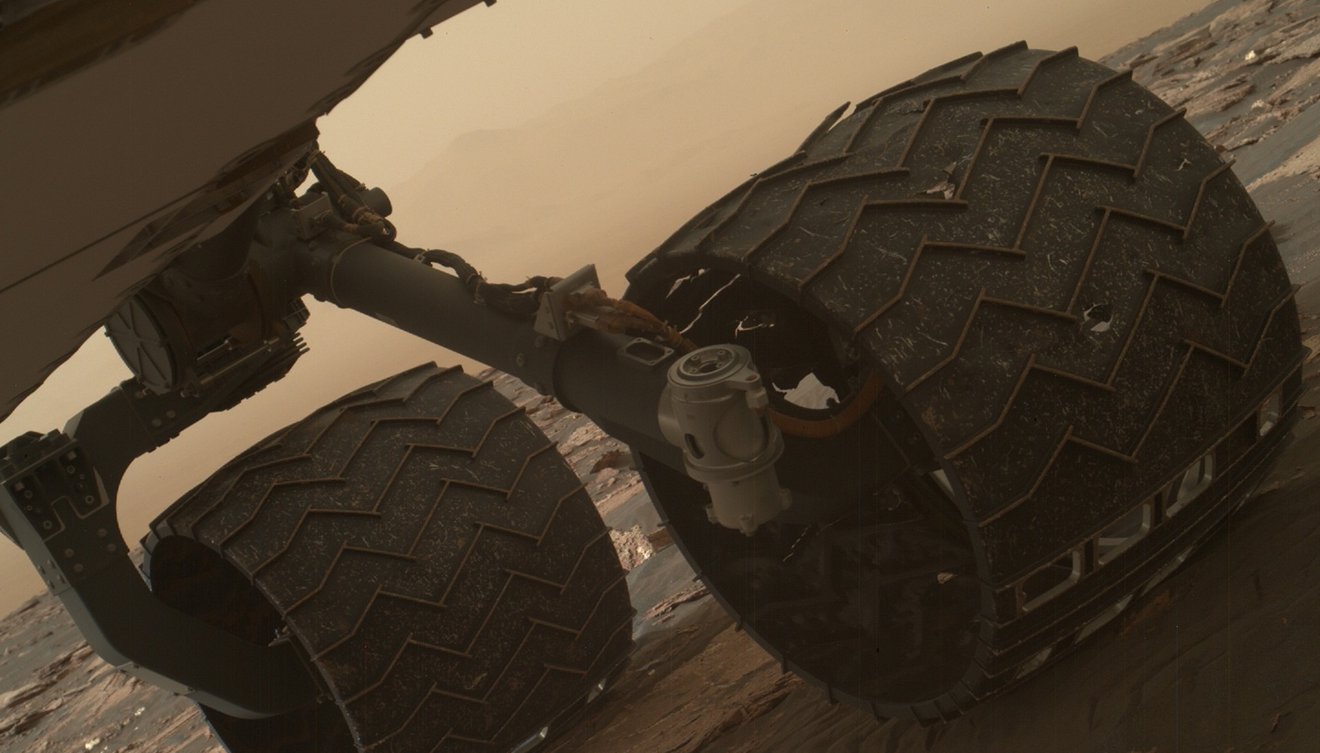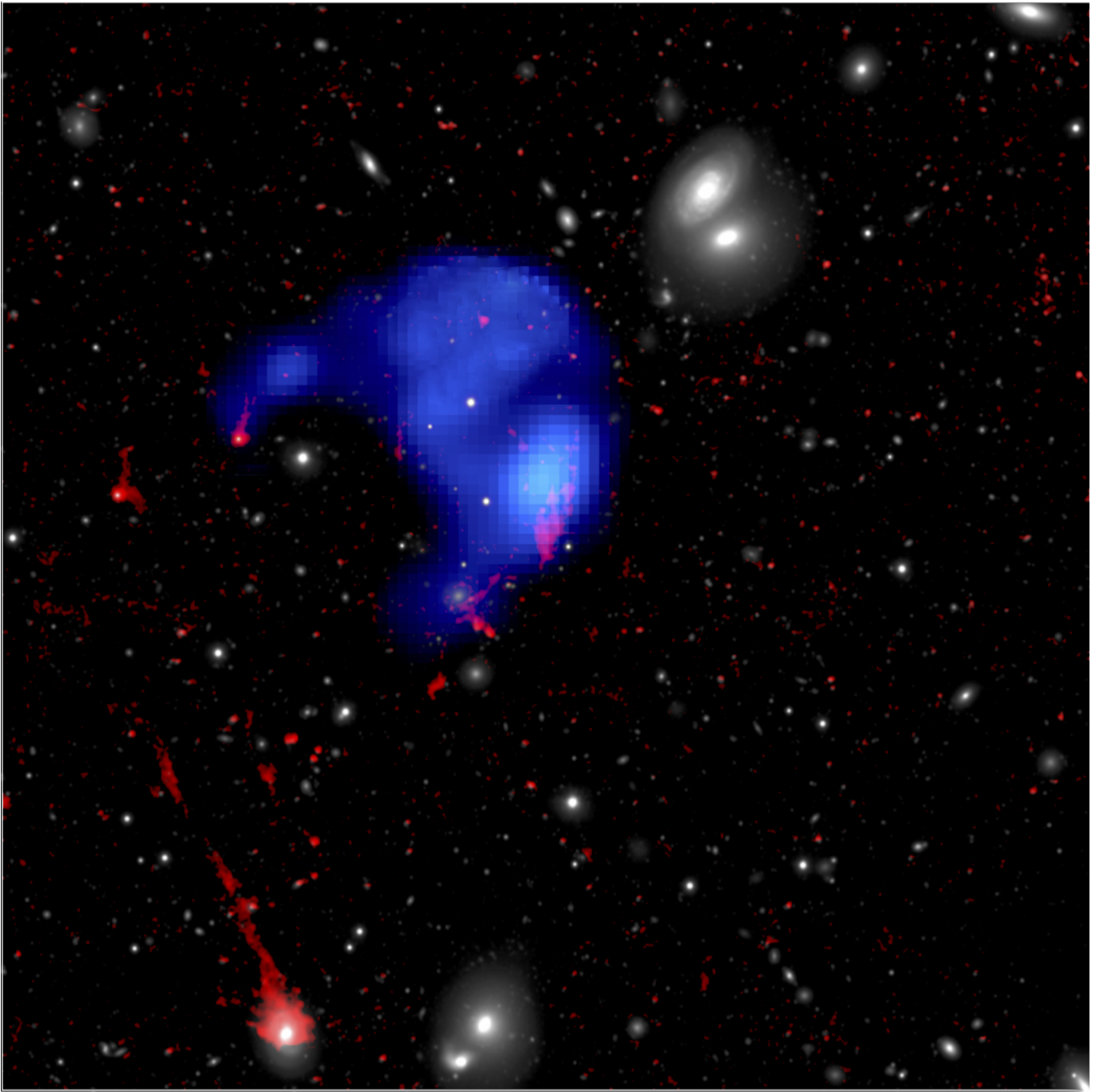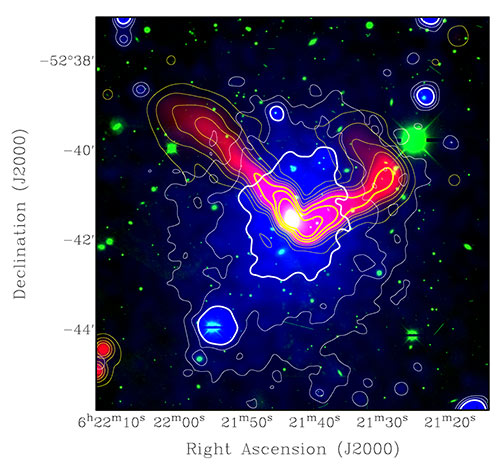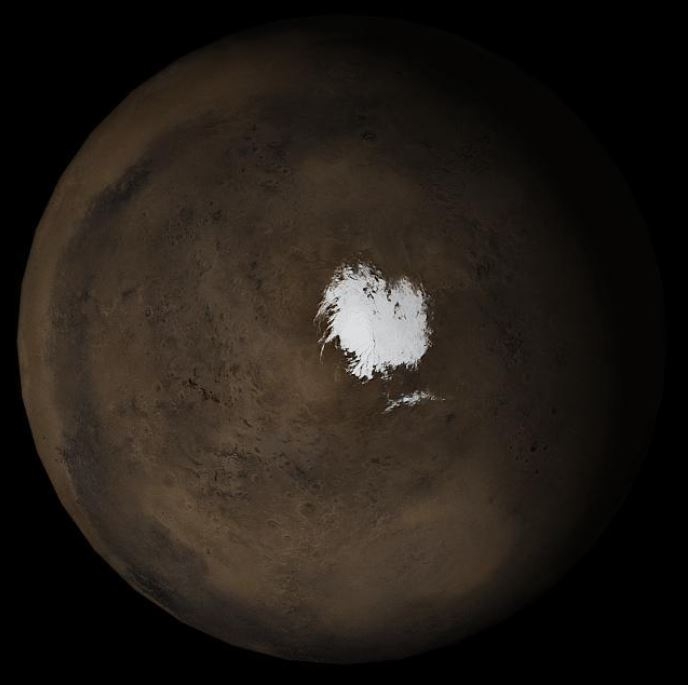In a new paper, a renowned physicist’s overview of recent observations shows that the gap in the universe expansion calculations is closing. The Standard Model may be fine after all. Plus, Mars’ methane mystery, an orphan cloud, galaxies moving to collide, and an interview with PSI’s Than Putzig about just what is under Mars’ south polar ice cap.
Podcast
Transcript
Hello and welcome to the Daily Space. I am your host Dr. Pamela Gay.
And I am your host Beth Johnson.
And we are here to put science in your brain.
Later on in the show, I’ll be speaking with Dr. Nathaniel Putzig from the Planetary Science Institute about just what might be under Mars’ south polar ice cap. We’re looking for water, and recent research says we found subsurface lakes of it, but Dr. Putzig was part of another team that said, “Hold up. Did we really?” We’ll chat with him about why it’s important to examine all the possibilities.
But first, let’s look at the news.
One of the most important science questions today may be “is there life on Mars?” Early images from Mariner 4, 6-7, and 9 made it clear that Mars is a modern-day desert, and no cities or seas dot its surface. Subsequent experiments by the Viking landers are generally interpreted as indicating there isn’t microbial life on Mars, but the results of those experiments are still actively debated more than forty years later.

Since those early experiments, we’ve learned several important facts about Mars: It had a watery surface in the past, it has subsurface ice and possibly subsurface saltwater, and microbial life on Earth has figured out how to survive in Mars-like environments.
There have also been confusing observations of methane made by the Mars Curiosity Rover. Methane is destroyed by sunlight over time, and any methane that is observed has to be freshly produced. Methane has two major sources, biology and geology, and we had thought Mars was both biologically dead and geologically dead. This methane detection indicates that either life, geologic activity related to magma and volcanic, or both exist. I personally am rooting for the “or both.”
The reason these results are confusing is that there are extremely sensitive atmospheric sensors orbiting Mars that haven’t been able to replicate these detections. There is every reason to believe both the orbiter and rover are working perfectly. So how can both be right?
It turns out that measuring these gases is an energy-intensive process, so the orbiting ExoMars Trace Gas Orbiter, with its solar panels, was making its measurements during the day. Mars Curiosity, with its radio-thermal generator, was taking its measurements at night when other instruments weren’t active and the detector could have all its power to itself.
In new models from a team led by Christopher Webster, scientists have shown that in the cool Martian night, the air is still, and methane can build up near the surface, where Curiosity is sitting. During the day, the circulation of the atmosphere scatters that methane to undetectable levels. To prove this theory, the team had Curiosity do something new: it looked for methane during the Martian day, and it didn’t find it.
Over two days and one night, Curiosity repeatedly sampled for methane, and during daylight, it wasn’t there in sufficient amounts to be detected. This not only explains ExoMars’ lack of detection, but it also reminds us that methane is, somehow, seeping to Mars’ surface regularly. Now, we just need to sort out how.

From clouds of methane on Mars, we now turn to clouds of mixed hot gases in a galaxy cluster.
A favorite target for astrophotographers with large scopes, the Leo Cluster or Abel 1367 is about 300 million light-years from Earth. In 2017, astronomers taking images designed to reveal the faintest structures in this system found a small warm gas cloud. These observations were made with the eight-meter Subaru telescope in Hawaii.
Follow-up surveys of this system with the orbiting XMM-Newton telescope determined the gas is hot but not as hot as normal intra-cluster gas. It’s also not distributed normally. Instead of being distributed throughout the cluster in a smooth distribution that is hottest and densest in the cluster center, this material is just coolly hanging out off-center. Its temperature is actually consistent with what is normally found inside a massive galaxy, and in a new paper in Monthly Notices of the Royal Astronomical Society (MNRAS) and led by Chong Ge, researchers explain that this is likely a cloud of gas stripped out of a galaxy that has since journeyed on to other places.
This is a cool new snapshot of cluster evolution. We knew clusters stripped galaxies of gas, we knew that gas got incorporated into the cluster gas, and now we know that this process takes enough time that sometimes we get to see the gas without the galaxy.

Galaxy clusters are part of the large-scale structure of our universe. Over the past thirteen billion years or so, what started as an almost smooth distribution of matter has evolved to a swiss cheese of walls, threads, and clusters of matter defined by the gravitational pull of more massive regions on the now-emptying voids of lower density regions. It has long been thought that galaxies should stream along the walls and threads toward the highest density regions, and now, for the first time, a galaxy has been caught doing just that.
Radio, optical, and X-ray observations together describe an active galaxy that has two large jets streaming out of its central supermassive black hole and getting bent to stream behind the galaxy as it moves through the sky. According to study lead author Angie Veronica, the jets of matter are streaming out behind it “like the braids of a running girl.” It’s always amazing when the science is right and the images are weird and awesome.
One of the weird things that can happen as measurements get more precise is unknown errors crop up. Need two pieces of pipe to be the same length? Well, in building my old house, that would call for a pencil, a ruler, a fancy blade used only with goggles, and a bit of trepidation. The pieces may differ by a millimeter here or there, but the house was built in 1893, and anything better than a centimeter? I’ll take it.
If you are building something for LIGO, however, digital calipers and lasers are likely to be involved and differences may be measured in wavelengths of light.
This means that a bunch of pipes I see as being the same size, to LIGO, may all appear pretty different. And it may turn out that the differences between cutting on the inside of the pencil line and on the outside of the pencil line can lead to more sensitive measurements to reveal two different sets of noisy measurements.

In trying to measure the expansion rate of our universe, we’ve used a lot of different rulers, and we’ve even strung them together awkwardly since no one tool can measure the full distance back to the beginning of the universe. Any issues in those rulers can lead to errors that get multiplied across everything else.
As hard as these measurements are to make, our ability to make accurate measurements has been getting better and better, and over the past several years, we’ve started to notice that one set of measurements – those that look at the cosmic background light – yield one value, and measurements that look at nearby and middle distance stars and supernovae appear to have a slightly different value, with those values not quite matching.
Now, a review paper by Wendy Freedman, one of the scientific heroes of these kinds of measurements, reveals that it looks like while our cosmic microwave background-based measurements seem to be more like the high-precision digital caliper measurements we’d like, the measurements from stars and supernovae may have been made with not entirely accurate rulers that added errors.
Specifically, we calibrate our supernova distance measurement using red giant stars and Cepheid variable stars, and she finds that improving understanding of red giants is shifting the distance scale just a bit and in the direction that brings supernovae measurements in line with cosmic microwave background measurements. A similar error hasn’t yet been found in Cepheid variable stars, but Freedman points out that those measurements could easily be affected by dust that exists in the vicinity of these young stars. Simply adding a bit of dust, and the changes in apparent brightness it would cause, is enough to also bring things into alignment.
I’m sure this won’t be the final word on this science. If the discrepancy is real, it would indicate there is new physics that could lead to a Nobel prize, and folks are always willing to chase Nobel prizes into dark scientific alleys. For now though, I will actually sleep a bit better knowing there probably isn’t weird new physics to complicate our universe.
Interview

Earlier this week, we brought you a story about how a new analysis of bright reflections found in ESA’s Mars Express MARSIS data revealed the possibility that what was once thought to be liquid water beneath Mars’ south polar ice caps may actually be something other substance like clay or salty ice. New possibilities are on the table, and while they do not exclude the existence of liquid water lakes, they do mean that we need to use caution before accepting the result. After all, a crewed mission to Mars will depend on Martian water resources.
With me today is Dr. Than Putzig of the Planetary Science Institute. Than is a co-author on the new paper, published in AGU’s Geophysical Research Letters. He is also a senior scientist here at PSI and works on pretty much every Mars mission out there it seems.
Thank you and welcome, Than!
[Interview]
This has been the Daily Space.
As a reminder, we are taking next week off. Want more of us? Check out CosmoQuest.org and get tickets for CosmoQuest-a-Con, our 80s space party that will take place July 16-18.
Learn More
Methane on Mars Collects at Night
- NASA JPL press release
- “Day-night differences in Mars methane suggest nighttime containment at Gale crater,” Christopher R. Webster et al., 2021 April 29, Astronomy & Astrophysics
Cloud of Gas Found Lurking in Galaxy Cluster
- ESA press release
- “An H α/X-ray orphan cloud as a signpost of intracluster medium clumping,” Chong Ge et al., 2021 June 1, Monthly Notices of the Royal Astronomical Society
Galaxies Travel on Mass Threads
- Macquarie University press release
- “The eROSITA View of the Abell 3391/95 Field: The Northern Clump — The Largest Infalling Structure in the Longest Known Gas Filament Observed with eROSITA, XMM-Newton, Chandra,” Angie Veronica et al., to be published in Astronomy & Astrophysics (preprint on arxiv.org)
New Research May Bring the Universe Into Cohesion
- University of Chicago press release
- “Measurements of the Hubble Constant: Tensions in Perspective,” Wendy L. Freedman, to be published in The Astrophysical Journal (preprint on arxiv.org)
Liquid Water May Not Be Under Mars’ South Polar Ice Cap
- Arizona State University press release
- PSI press release
- “Strong MARSIS Radar Reflections from the Base of Martian South Polar Cap may be due to Conductive Ice or Minerals,” C. J. Bierson, S. Tulaczyk, S. W. Courville, and N. E. Putzig, 2021 June 28, Geophysical Research Letters
Credits
Written by Pamela Gay and Beth Johnson
Hosted by Pamela Gay and Beth Johnson
Audio and Video Editing by Ally Pelphrey
Content Editing by Beth Johnson
Intro and Outro music by Kevin MacLeod, https://incompetech.com/music/


 We record most shows live, on Twitch. Follow us today to get alerts when we go live.
We record most shows live, on Twitch. Follow us today to get alerts when we go live.